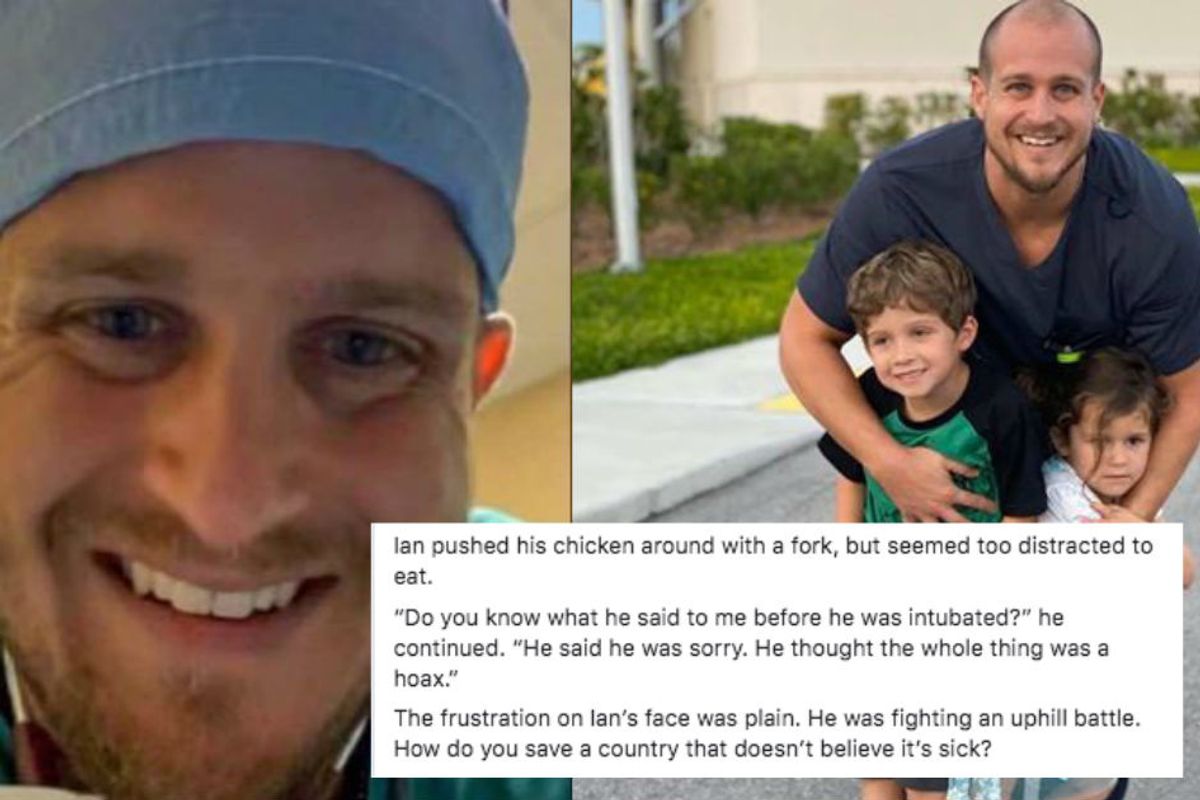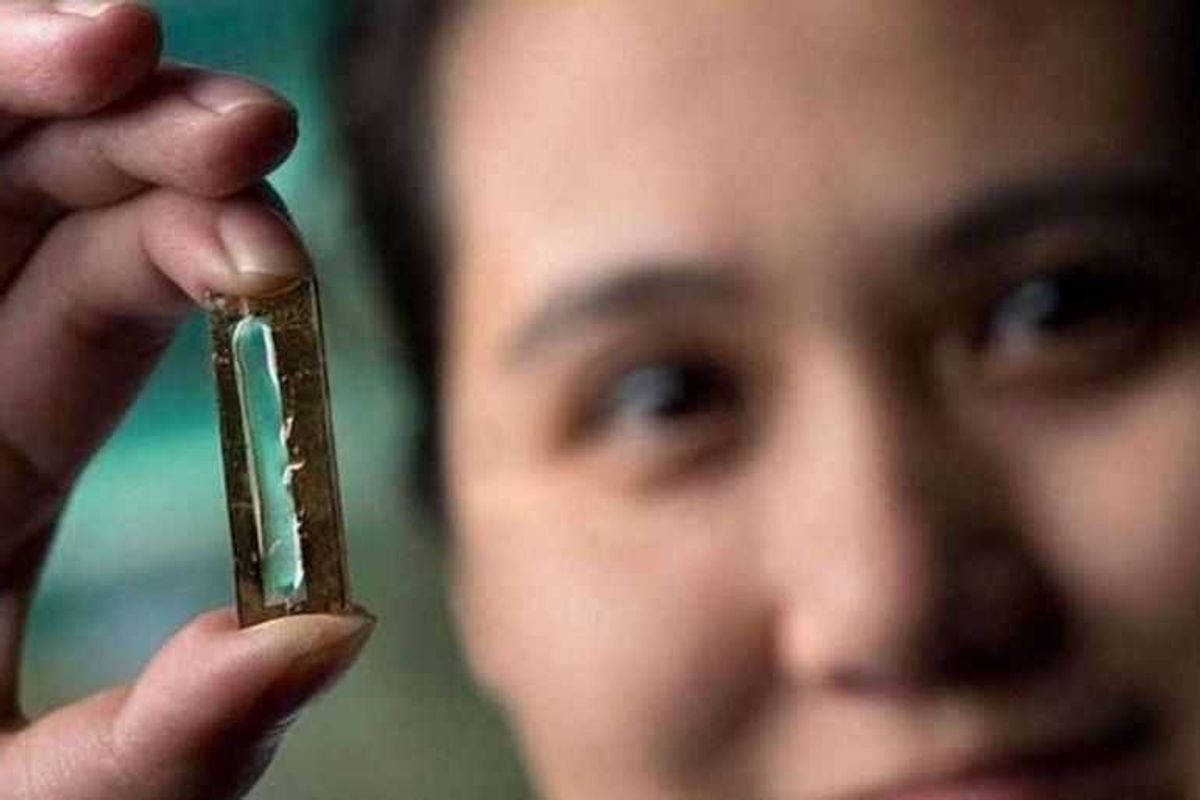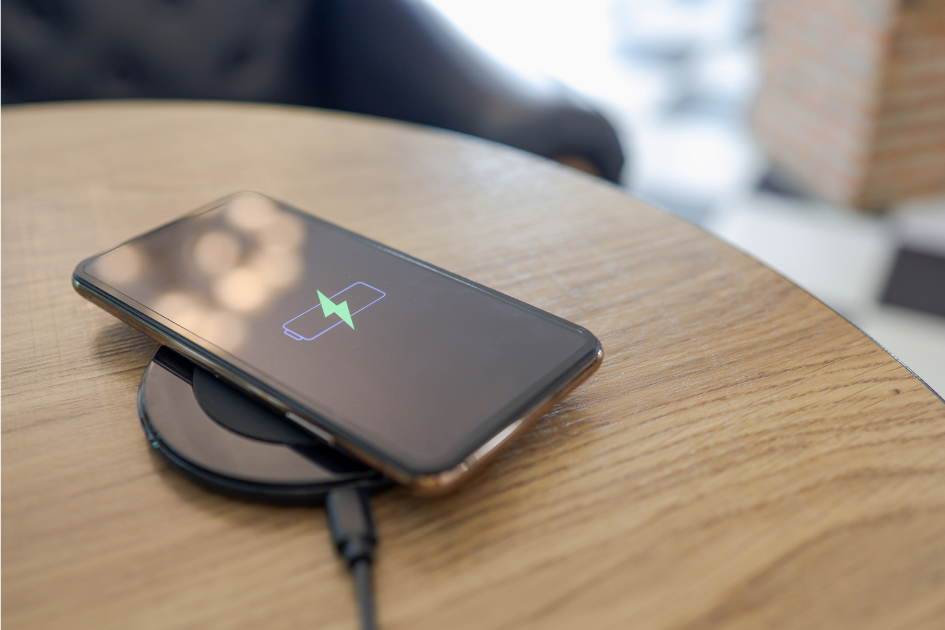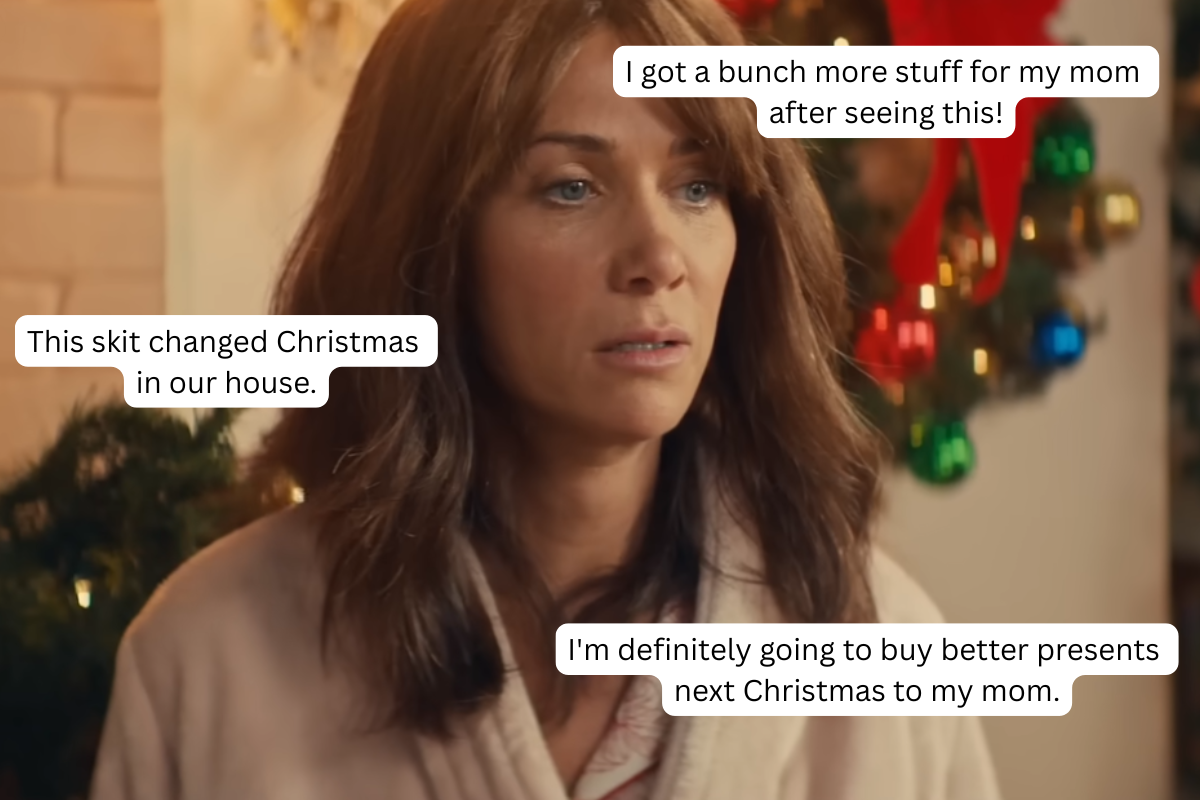ER doctor's day-in-the-life story shows reality for healthcare workers 6 months in

Here we are, six months into the coronavirus pandemic, and people are tired. We're tired of social distancing, wearing masks, the economic uncertainty, the constant debates and denials, all of it.
But no one is more tired than the healthcare workers on the frontline. Those whom we celebrated and hailed as heroes months ago have largely been forgotten as news cycles shift and increased illness and death become "normal." But they're still there. They're still risking themselves to save others. And they've been at it for a long time.
Mary Katherine Backstrom shared her experience as the wife of an ER doctor in Florida, explaining the impact this pandemic is having on the people treating its victims and reminding us that healthcare workers are still showing up, despite all of the obstacles that make their jobs harder.
Backstrom wrote:
"When Ian got home from work last Monday, I could tell it had been a rough shift. He kicked his shoes off on the backdoor stoop as he wrapped up a call with a specialist.
'Please keep me posted,' I heard him say. 'I'm hoping they make some progress.'
He'd been off the clock for at least 3 hours, but was still advocating for a patient.
'Hey baby,' I said when he walked through the door.
'Hey,' he responded with a half-hearted smile. He walked straight past me and the children.
The kids used to squeal and attack their Daddy when he walked through the door from work. It was his favorite thing in the whole wide world, but it's not allowed anymore.
The 'Daddy's Home!' hug has been canceled for some time, now. One more thing the pandemic has stolen.
Ian disappeared into our bedroom after throwing his scrubs straight in the wash. He jumped in the shower and I went outside to sprayed down his shoes with disinfectant.
Twenty minutes later, we sat down for dinner.
I asked him how his work day was. He was worried sick over a patient. They had come to the hospital critically ill, and tested positive for Covid.
'He was terrified, MK. The look on his face broke my heart.'
Ian pushed his chicken around with a fork, but seemed too distracted to eat.
'Do you know what he said to me before he was intubated?' he continued. 'He said he was sorry. He thought the whole thing was a hoax.'
The frustration on Ian's face was plain. He was fighting an uphill battle. How do you save a country that doesn't believe it's sick?
I didn't ask for any more details. I knew how my husband was feeling.
Heck, ask ANY health care worker how they are feeling right now. I can tell you what they're going to say.
They are tired. Bone tired.
Mentally, physically, and spiritually.
Six months later, the pandemic is still here. It's still claiming lives at a horrifying pace.
40,000 lives.
60,000.
100,000.
160,000....
These workers who months ago were hailed as 'heroes' have practically been forgotten. But they are still out there on the frontlines.
Still diagnosing, still intubating, still holding the hands of dying patients. Still risking their health (and the health of their families) by showing up, every day.
They are fighting against a growing monster, that feels more and more unconquerable. Not that it keeps them from doing their job.
Accolades be damned, healthcare workers show up.
As their pay is cut. As nurses are let go. As the pandemic rages on.
Healthcare workers show up.
As the virus spreads. As conspiracy theories abound.
Healthcare workers show up.
They put their N95s in a brown paper lunch sack, praying it works for another week. They make their arrangements 'just in case'...but healthcare workers show up.
***
Two days later at 4 am, I woke to the sound of our Keurig. I rolled out of bed to give Ian a hug and wish him a good day at work. There was a tired sadness in his eyes, so I asked him if something was wrong.
'My patient died,' he said with a sigh. 'The one I was so worried about.'
'I'm so sorry,' I said, hugging him tight. 'You did everything you could.'
The conflict was clear across his face, but he didn't argue the point. He just grabbed his coffee and kissed my cheek, then headed out the door.
Because even when they are devastated. Even when they are tired. Even when they are losing hope. Even as conspiracy theories thrive, medicine is politicized, and sound science is rejected. As an out-of-control pandemic wrecks havoc on the community they serve...
Even then.
Perhaps, especially then.
Healthcare workers show up.
❤️ Healthcare burnout is at an all time high. Please share this message and thank a HCW today. They are STILL everyday heroes. ❤️"
The post has been shared widely, with fellow healthcare workers commenting with gratitude and solidarity:
"Thank you! Psychiatric nurse here. We are so tired and there just isn't enough to go around and still SO MANY that don't believe."
"I work with covid patients. My fellow X-ray techs and I take these patients chest and abdominal X-rays. It has been a battle, to say the least. It's a slap in the face to us to all by those who think it's the flu, or a hoax or don't wear masks. My coworker and I were talking today about how difficult it had been and even though things are better in Illinois, it's still here. We still work, no pay raises, cut hours, shifting of hours and nobody has taken vacation days since all this began. We are sad, tired, burned out and ridden with anxiety. Thank you for the thank you."
"[Thank you] for your observation and words of encouragement to all of us in this field. It is scary, heartbreaking and devastating, never would I have imagined encountering something like this in my career as I'm sure others have felt the same."
"Love this story, and it makes me sad at the same time, because this is about as close to the truth as it gets 😢 I work in EMS, and it's so disheartening, that people aren't taking this seriously, and they believe that masks are of no help at all! Please people, wake up....I will pray, that you aren't my next patient 😔"
"Yes! My husband is in EMS and has been caring for Covid patients several times a shift for months. He and at least 14 others in his service are out with Covid currently. We've been so careful but there's only so much you can do when it's your job. My entire family has it currently and it's awful. Hugs."
"This is so so true! As an ICU nurse I know the death of COVID all too well 😔 I try to avoid the ignorance of non-medical people, their misguided information frustrates and saddens me."
"I'm a health care worker. I was saying to my husband as I'm starting a 5 day rotation. I told him I'm filled with dread. My stomach is queasy, my heart hurts. I'm on the verge of tears.We are pushed to our limits. We're a small rural hospital, we get PPE but we have to take care of it until it's worn out or no longer safe. More rooms for COVID added weekly. All I can do is pray for safety of myself and my co workers. This thing is so real. I know how Ian feels. Much love MK."
"My husband is a nurse. He cares deeply for his patients. Covid is breaking his heart. We have to stay completely separate from him because on of our sons has leukemia. He lives in two rooms of our home. Climbs in and out of a window. He can't be hugged by his family! It is frustrating to read the posts that say this a political virus or a hoax. I am praying for your husband along with all our frontline workers."
"I am in RN in a COVID ICU and it's devastating what this disease is doing to people and so incredibly heartbreaking. Thank you for posting this as I do feel we have been forgotten."
Here's to all the healthcare workers who continue to show up, continue to care, continue to put their own lives and health on the line to save others. They continue to be the heroes of this battle and deserve our continued, unbridled support.
- An ER doctor shared one patient's COVID-19 recovery story, and it's ... ›
- People frustrated with lockdowns need to read this ER doctor's ... ›
- Doctor shares his 'typical day' in a COVID ward, taking a jab at ... ›
- Oregon hospital workers smash plates to relieve stress - Upworthy ›
- Oregon hospital workers smash plates to relieve stress - Upworthy ›



 TikTok · Ale
TikTok · Ale

 Phone charging.
Phone charging. bill nye chemistry GIF by NETFLIX
bill nye chemistry GIF by NETFLIX 


 A happy woman in the Netherlands.via
A happy woman in the Netherlands.via
 Thumbs up
Thumbs up  Woman in chair.
Woman in chair.